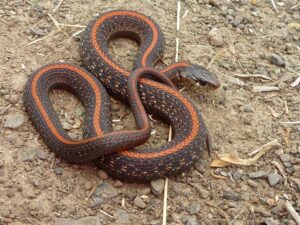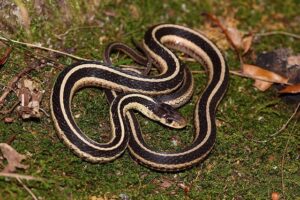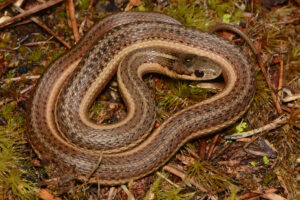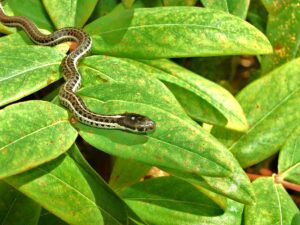Northwestern Garter Snake (Thamnophis ordinoides)
Updated on
25/04/2024The northwestern garter snake is a small to medium-sized, primarily terrestrial, diurnal colubrid native to North America. The solitary species is constantly on the move, looking for food during the day. They communicate with one another and sense their surroundings through sight, pheromones, and tactile responses.
Scientific Classifications
- Suborder:Serpentes
- Family:Colubridae
- Genus:Thamnophis
- Species:T. ordinoides
Conservation Status
Description
Size
The adults have a total size of 13-38 in (33-97 cm), on average, including the tail.
Color and Appearance
The serpent varies greatly in color and pattern. In fact, it is one of the most variable species of snakes in the world. Typically, it bears a distinct, wide dorsal stripe, but sometimes it can be narrow, very dull in color, or absent. The color of the stripe can be yellow, gold, red, orange, blue, greenish, tan, or white. Usually, there are stripes along the lower sides, but they may also be absent in some. These stripes vary in color from yellow to tan to whitish.
The ground color is olive, blackish, bluish, brownish, or gray, sometimes with reddish specks or a reddish tint. Typically, two rows of alternating dark spots on the dorsal side may be partly obscured by a very dark background color. The underside is brown, yellowish, black, or gray, often with red specks or dark spots. Entirely red unstriped individuals occur in extreme northwestern California, in the Siskiyou Mountains. Melanistic specimens are also found.
The snake has a head that is barely wider than the neck and keeled dorsal scales.
Are They Dangerous to Humans
When threatened, the northwestern garter snake escapes into vegetation, not water, though it can swim. When first handled, it often releases musk and cloacal contents but rarely bites. The snake has a mild venom that is not dangerous to most humans but deadly for its small prey.
Northwestern Garter Snakes at a Glance
Distribution
This garter snake is found in Oregon, Washington, and California in the US and British Columbia in Canada.
Habitat
It is often found on the edges of meadows, surrounded by forests, as it needs some sunshine to survive. It can also be found under stumps when the weather is too hot outside. It also lives in damp areas with ample vegetation and open sunny areas like forest clearings and lowland thickets. It is common near human localities, living below boards and other surface covers.
In most areas, its activity starts in March and ends in October. But it can sometimes be seen basking in the sunny days of winter.
Lifespan
The northwestern garter snake is thought to live for around 7 years in the wild. The maximum recorded lifespan is 15.8 years in captivity.
Predators
They fall prey to American crows, northwestern crows, and hawks.
Diet
Salamanders, slugs, and frogs form their diet.
Reproduction
Ovoviviparous (gives birth to live young from eggs that hatch inside the body) Mating occurs in early spring and early fall, with the young being born from July to September.
Source
fbcdn.net, oregonstate.edu, thehibbitts.net, flickr.com









